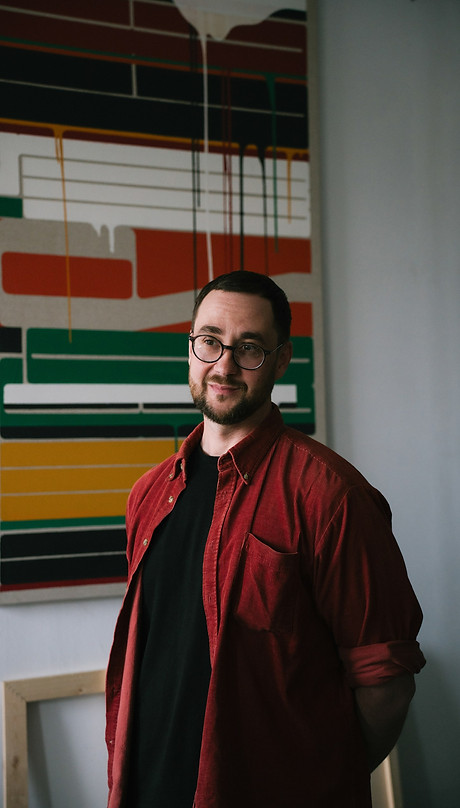About
Andrey Pavli

My name is Andrey Pavli.
I live and work in Georgia. My language is compositional structure. I build the surface of the painting as one constructs space: with attention to density, depth, and points of support. It is important to me that the work doesn’t narrate but holds.
Georgian script, to me, is less a sign and more a volumetric graphic form, freed from function. I use letters to stop reading–not as an act of destruction, but as a way toward a primary form: a moment when the line has not yet become a symbol but already carries rhythm. The words encrypted on the canvas seem suspended in the air–dissolving in the rhythm of form, yet preserving their presence, as if whispering through the surface.
The base of my work is fabric: linen and cotton–tactile and physically felt. These materials respond to me, anchoring me in the process. On them, I apply paints based on silicone and resins. The surface becomes elastic, with a rubber-like membrane effect. It is important to me that the image is felt by the body–that the color has weight, that the viewer wants to touch it.
Color in my work is material. It holds temperature, density, equilibrium. I refine it as one refines the proportions of load-bearing structures in architecture. Each shade has its own trajectory; it inhabits space, enters resonance with form and material.
I think of form as an architectonic. I’m interested in how elements join into a stable construction–how lines become load-bearing, and the surface turns into a field with internal organization. I work with composition as a system in which each part distributes tension, creates balance, and keeps the viewer within the logic of form.
My works do not demand interpretation. They offer presence. Perception becomes embodied: one wants to feel the surface, follow the line with a finger, slow down within the form. The viewer engages not as a reader but as a participant–through the surface, the organizational logic, the residual density of the sign.
Material speaks of place. I work in Georgia, and that defines the rhythm, texture, quality of light, and depth of fabric. Local script, materials, and the tectonics of the landscape–all of this influences how I organize plastic logic. I don’t separate environment from form.
I strive for a state in which the work ceases to be an object and becomes an environment. Where there is no external narrative but internal clarity. Where form does not describe but gathers. Where the viewer does not read but dissolves. I create a space one can remain in–not to understand, but to stay.